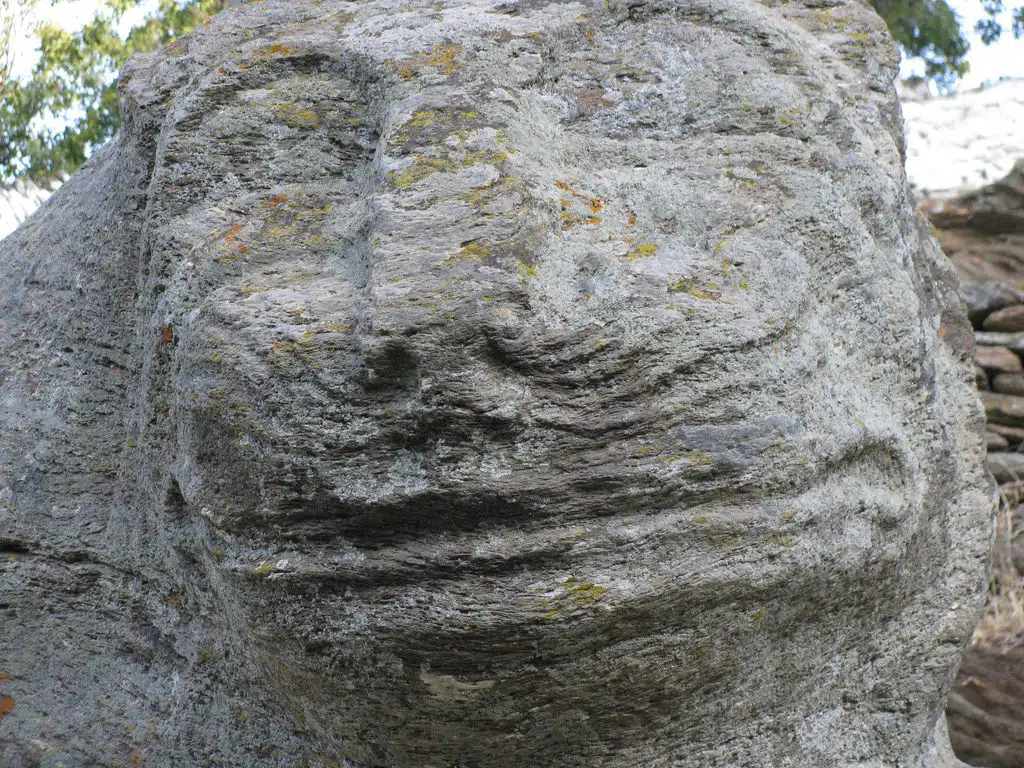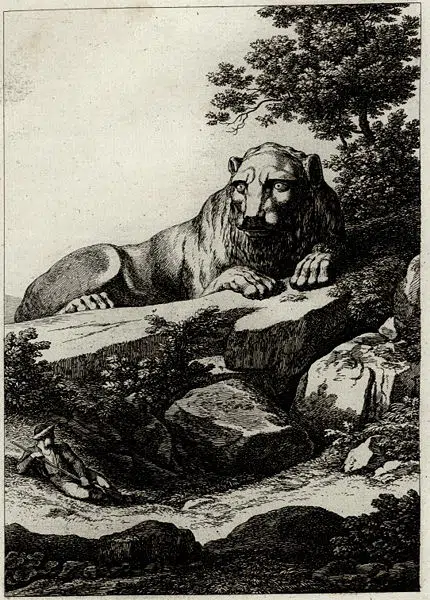
The Lion of Kea, an Archaic-era sculpture seemingly growing out of the bedrock on the island of Kea in the Cyclades, poses one of the most puzzling mysteries from that era of ancient Greece.
Who sculpted it, just there, outside Ioulis, the capital of the island, and why?
Kea, also called Keos or Tzia, is the closest of the Cycladic Islands to Athens. The Lion, which is carved out of the native slate bedrock, is approximately eight meters (26 feet) long and three meters (9 feet) tall. It appears to grow out of the land itself, and has watched over the area, Sphinx-like, since ancient times.
Lion of Kea shrouded in mystery even today
Sometimes referred to as the Lion of Ioulis, local people call him by the familiar nickname “Liontas.” Even despite millennia of weathering, he still has the enigmatic, somewhat loopy grin that is an unmistakable hallmark of the so-called “Archaic smile” of sixth-century Greek sculpture.
The Lion, easily reached on foot, has become one of the must-see attractions on the island; this makes the fact that its history is comparatively so little known especially puzzling.
The sculpture, which is accessed from the road above it, is in the middle of a steeply-graded site that is clearly laid out to have served as an area where people would assemble, with multilayered terraces and stone walls.

The Lion may have been created in order to commemorate a legend from Greek mythology which held that Kea was once inhabited by water nymphs, whose beauty was such that it made the gods jealous.
In an attempt to destroy their happiness, the angry gods sent a lion to destroy the entire island. Clearly, this was not successful. The lion may have been part of a temple that was created to commemorate the island’s survival in the face of the wrath of those famously wrathful Greek gods.
Throughout the years, one would imagine, such a monolithic sculpture would have been extensively studied by archaeologists and historians, but this is unfortunately not the case.

In a 1964 article for the journal Greek, Roman and Byzantine Studies in 1964, George Huxley referenced the mythological history of Keos written by the mid-fifth century BC historian Xenomedes, which itself recalled earlier writings by Callimachus. According to the original source, the nymphs of Kea had originally lived at Parnassos but after being driven to the island, they then named it Hydroussa.
In that article, the renowned historian also noted that there is a version of the myth in which it is a lion that forces the nymphs to go from Keos to Karystos; that story was recorded in the writings of the second-century-BC historian Herakleides Lembos, who himself referenced Aristotle’s “Polity of the Keians.”
In a 1981 article on Keos for Hesperia, the journal of the American School for Classical Studies in Athens, John L. Caskey stated his conjecture that the Lion had been sent to chase away the nymphs of the many springs that supply the island with fresh water. He says that the legend is “surely a poetical record of a rare and damaging drought, still symbolized by a huge figure of the beast on a hillside near Ioulis.”
Archaeologist Jeffrey Hurwit, the Philip H. Knight Professor of History and the Classics at the University of Oregon, recorded that lion teeth dating back to the Bronze Age have indeed been found on Keos; so it is plausible that the statue commemorates the lions who once graced — and perhaps menaced — the populace there.
Through various writings, we know that The Lion of Kea must have been visible since antiquity; it is most often connected to the nymph story.

Renderings in pen and ink from the 1800s show more detail on the face of the Lion, although that is most likely due to the typical embellishments often added by artists of that time to all their subjects. Nineteenth-century travel writers such as James Theodore Brent, who wrote about the sculpture in 1885, were confounded by the Lion, with Brent positing that it was the sculpture that gave rise to the legend, not the other way around, in his book “The Cyclades: Or, Life Among the Insular Greeks:”
“The Lion of Keos is the most interesting sight on the island. It reposes on the hillside, propped up by stones to prevent its further slipping… it is impossible to fix a date or assign a cause for the construction of the Lion one thing is certain, that it is of very archaic work, more so than the lions at the Gate of Mycenae; and there was an old legend which stated that Keos was once inhabited by nymphs, who fled from thence to Karystos, fearing a great lion which lived there. It is quite probable that the existence of this granite (sic) lion gave rise to this myth, and that it is distinctly belonging to a prehistoric and mythical age — perhaps adorning one end of a pelasgic stadium.”
Brent was incorrect in assuming that the Lion of Kea was older than the Lions’ Gate at Mycenae, however; subsequent dating shows that the latter was approximately 700 years older than the Kea enigma.
Everything points to sculptors from the Archaic era creating the recumbent lion, with sculptures of similar quality evidenced in the incomplete colossal kouros located at Apollonas on Naxos and the monumental kouros on Delos.
According to Matthew Lloyd, a contributing editor of Ancient World magazine, the animals on the Terrace of Lions on Delos do not appear similar to the Lion of Kea; however, sculptural Lions that do resemble the Kea Lion are seen in sixth-century pedimental sculptures on the island of Corfu and the Acropolis in Athens.
Lions are commonly seen as subjects of early Greek mythology and art.
The proximity of the Lion of Kea to the modern city of Ioulis has perhaps contributed to its mystery perpetuating throughout the years; perhaps one day the ancient settlement under the city will be excavated and its connection to the Lion will be made plain. Until then the Lion of Kea continues to survey his domain across a ravine between two mountains, as mute as the quiet of a Summer afternoon.